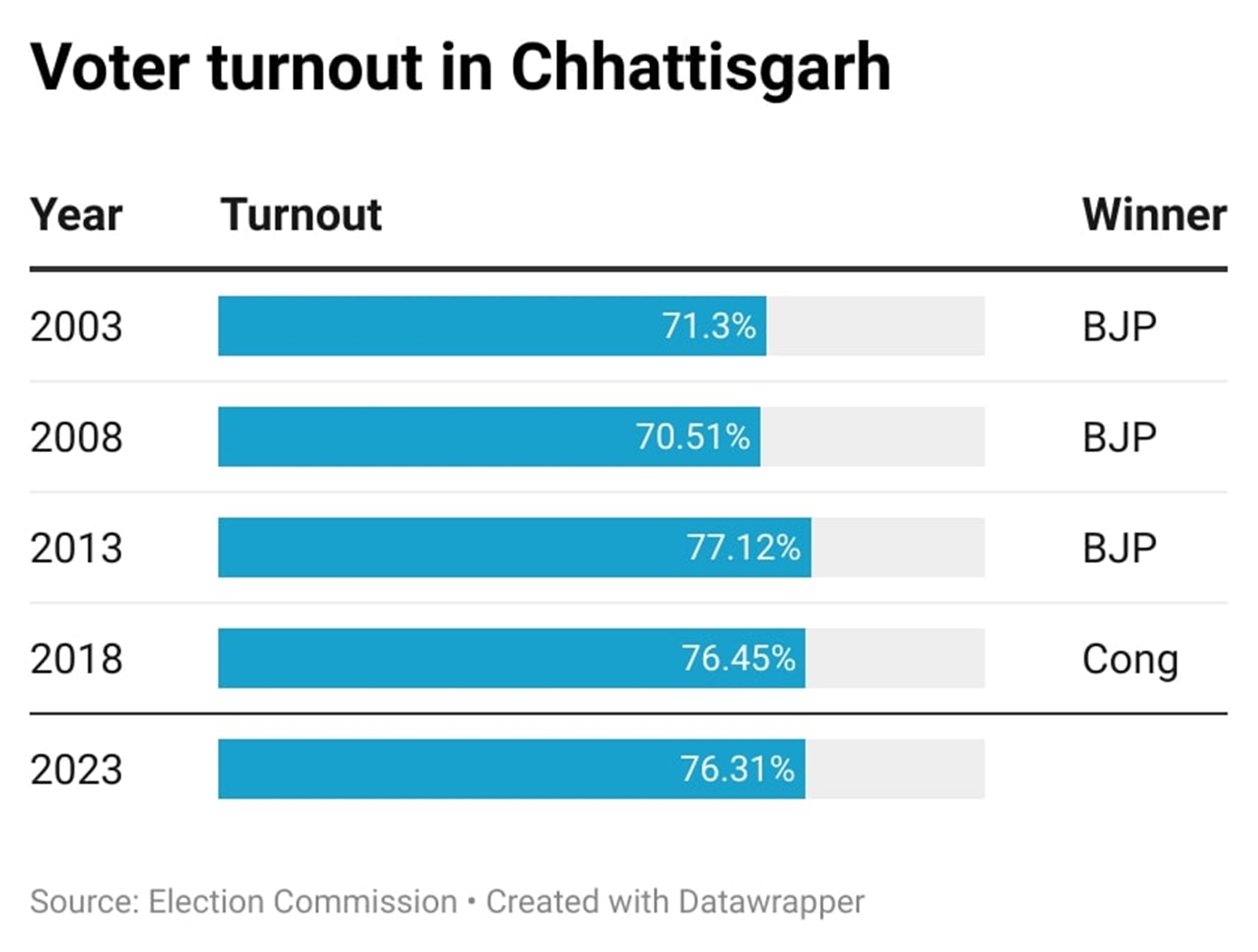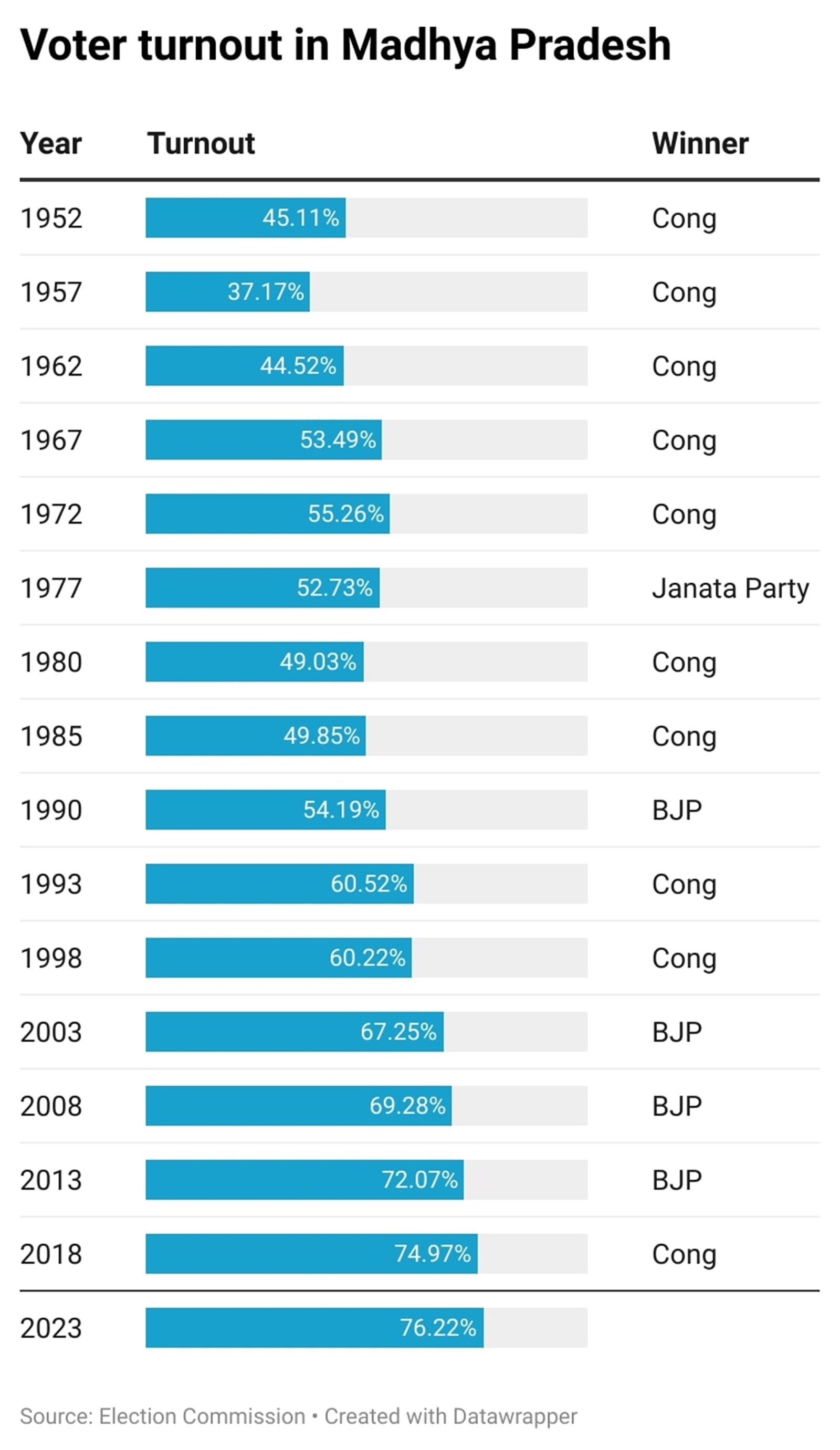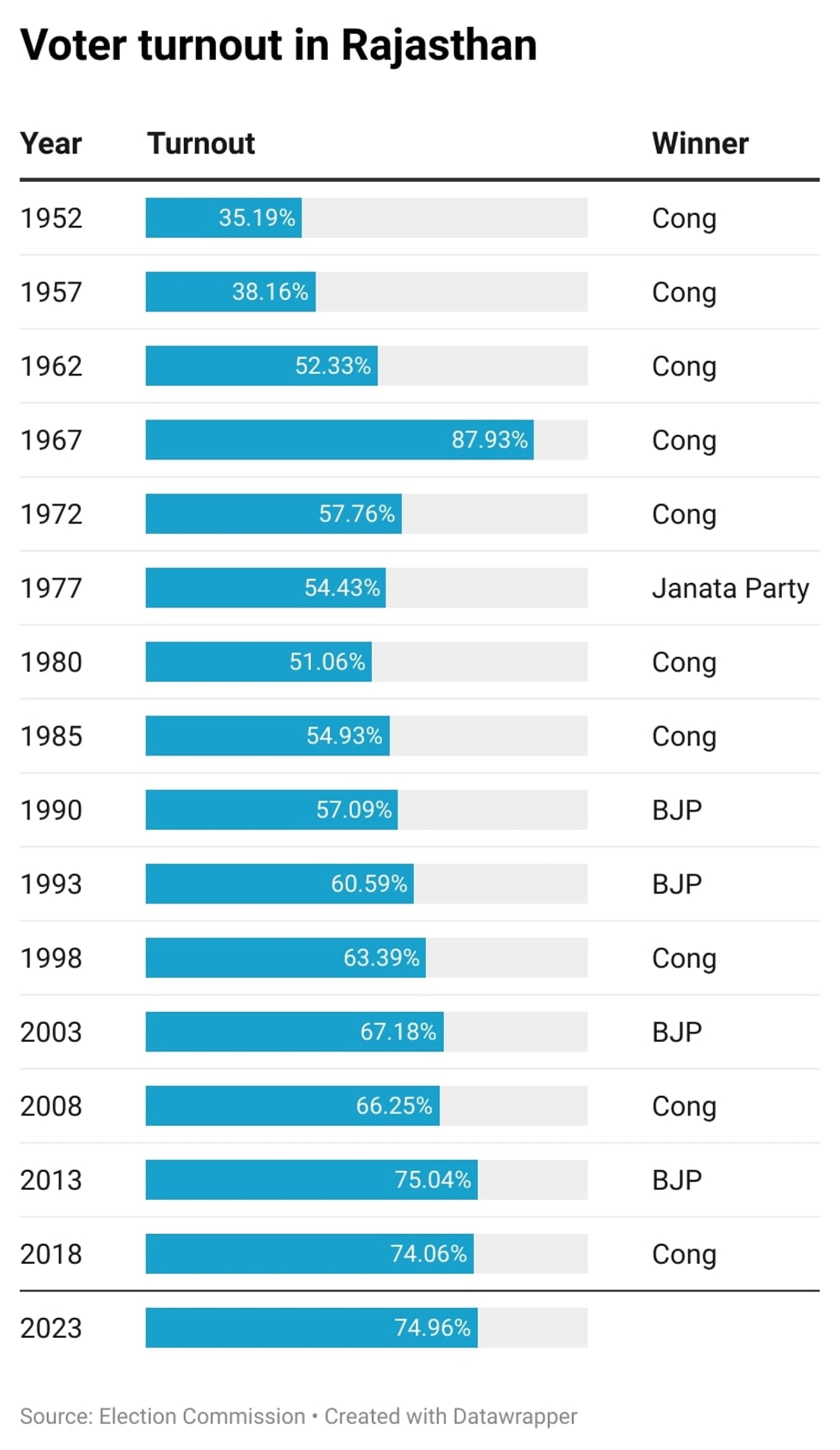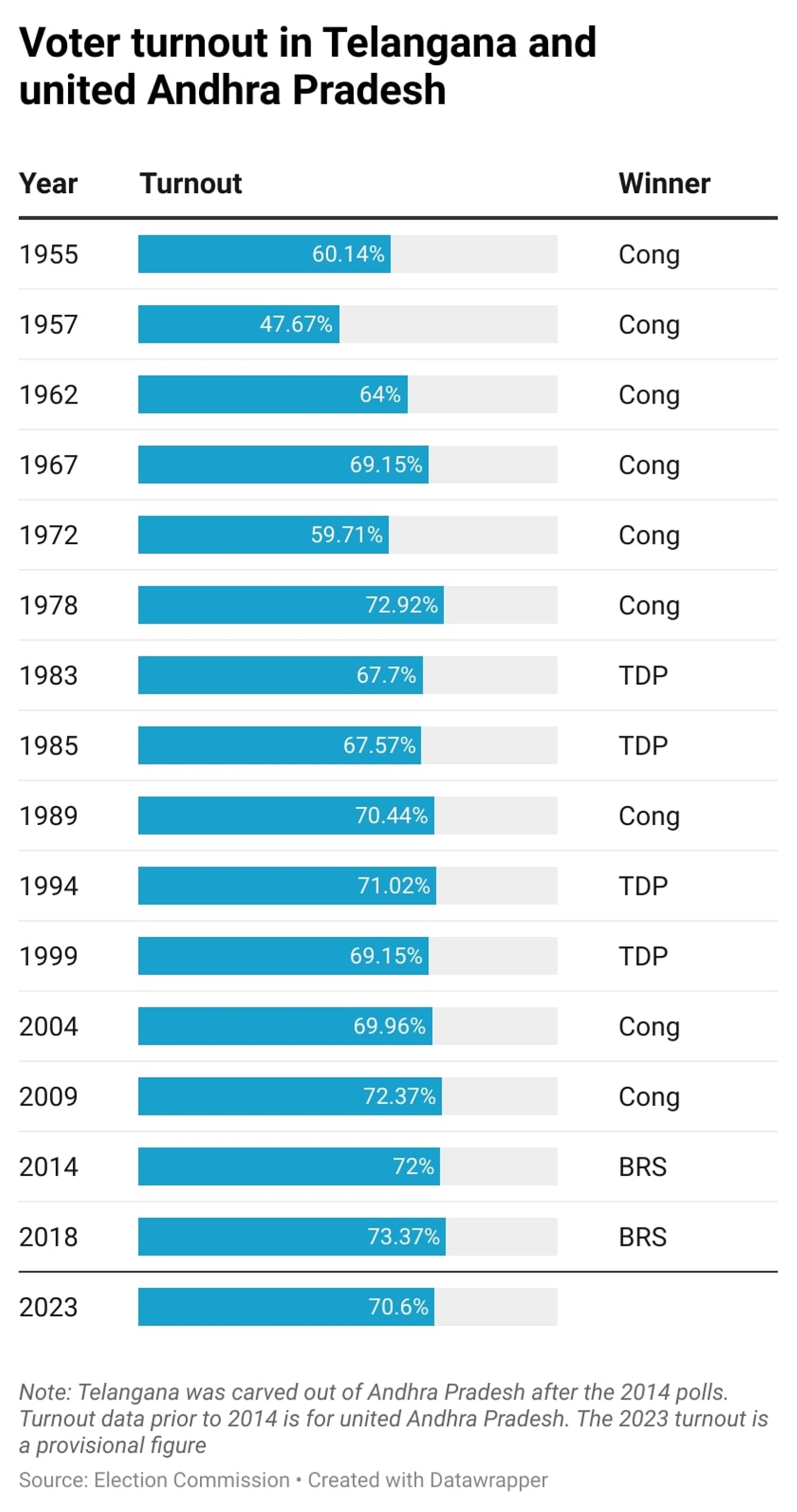© The Indian Express Pvt Ltd
Latest Comment
Post Comment
Read Comments
 Voters queue up at a polling station in Kukatpally constituency, to cast their votes for Telangana Assembly elections. (PTI)
Voters queue up at a polling station in Kukatpally constituency, to cast their votes for Telangana Assembly elections. (PTI)Now that the month-long Assembly elections to five states are finally over, a look at the respective turnouts in Mizoram, Chhattisgarh, Madhya Pradesh, Rajasthan and Telangana show that they have largely held on to the trend of consistently rising voting percentages. Except in Chhattisgarh and Telangana (as per provisional data on December 1 morning), the turnout is higher in the rest of the three compared to 2018.
However, do voter turnouts really tell a story, especially the commonly and long held belief that higher voting indicates anti-incumbency? A look at voting over the years shows that may not be the case, with some now even talking about a concept of “pro-incumbency”, like in the 2019 Lok Sabha elections, which saw a record-high voter turnout – and the BJP’s win by bigger numbers than in 2014.
Another noticeable trend is that state polls usually have higher turnouts than national polls.
The overall increase in voter turnout since Independence can largely be attributed to awareness efforts of the Election Commission and registration campaigns led by parties themselves. On other factors like urbanisation and literacy, the research shows unclear results. In fact, large cities tend to see lower turnouts than rural regions, a factor attributed by some experts to greater per capita incomes and hence lesser dependence on government welfare schemes. At the same time, the voter turnouts seem to be hitting a saturation point beyond the 70% figure, with the rise in voting now by only a few percentage points.
A look at the five states which voted in this round, and their respective turnouts and consequent results:
Since the state was carved out of Madhya Pradesh in 2000 and it held its first Assembly elections in 2003, Chhattisgarh’s turnout has not dropped below 70%. After three consecutive BJP terms, the turnout fell from 77.12% in 2013 to 76.45% in 2018 – and, contrary to the logic of higher voting meaning anti-incumbency, the Congress swept the BJP out of power in that election.
This time, the turnout has again dipped from 2018, though marginally, to 76.31%.
 Voter turnout in Chhattisgarh since 2003.
Voter turnout in Chhattisgarh since 2003.
In the 15 Assembly polls held in Madhya Pradesh between 1952 and 2018, the incumbent government has only failed to return to power on six occasions. In four of these elections, the turnout increased from the previous polls. In 2003, for instance, the incumbent Congress was defeated by the BJP with the voter turnout increasing by 7-percentage points from 1998. However, on eight occasions when the state returned the incumbent government to power, six followed increases in turnout.
Last time, a higher turnout did displace the BJP from power, but the Congress victory margin was very narrow and the BJP ended up toppling the Kamal Nath government that came to power.
This time, the turnout has increased from 74.97% in 2018 to 76.22%.
 Voter turnout in Madhya Pradesh since 1952
Voter turnout in Madhya Pradesh since 1952
Across the 12 state elections held in Mizoram, including four as a Union Territory, an incumbent government has won four times, out of which thrice, the voter turnout increased from the previous polls. On the other hand, of the seven elections where the incumbent government failed to win, the voter turnout increased four times. Overall, the turnout has only dropped from the previous polls on four occasions in the state’s electoral history.
This time, the turnout was 80.6%, a very marginal rise from 80.03% in 2018.
 Voter turnout in Mizoram since 1972.
Voter turnout in Mizoram since 1972.
No incumbent government has been re-elected in Rajasthan since the BJP’s 1993 win. Correspondingly, the voter turnout has increased in every poll in the state since then, barring 2008 and 2018, when the Congress came to power. Before 1993, the incumbent government failed to win three times – and the turnout increased in two of these polls.
An incumbent government has only won on six occasions in the state’s history – and in as many as five, the turnout increased from the previous election. Incumbent governments have lost eight times – four of those losses followed increases in voter turnout.
This time, the turnout hit 74.96%, which was again a marginal increase from 74.06% in 2018.
 Voter turnout in Rajasthan since 1952.
Voter turnout in Rajasthan since 1952.
After Telangana was carved out of Andhra Pradesh in 2014, the turnout rose from 72% in 2014 (when polling was held for the combined state) to 73.37% in 2018, with the Bharat Rashtra Samithi (BRS) winning both times. In 2018, the rise in turnout coincided with a sharp jump in BRS seat tally.
This time, as of Friday morning, the EC put the voter turnout at 70.6%, a considerable drop from 2018.
 Voter turnout in united Andhra Pradesh and Telangana, since 1955.
Voter turnout in united Andhra Pradesh and Telangana, since 1955.
In united Andhra Pradesh, an incumbent government has lost only four times since the first state polls in 1955. On three of these occasions, the voter turnout increased. On the other hand, four incumbent government wins came on the back of increases in voter turnout.